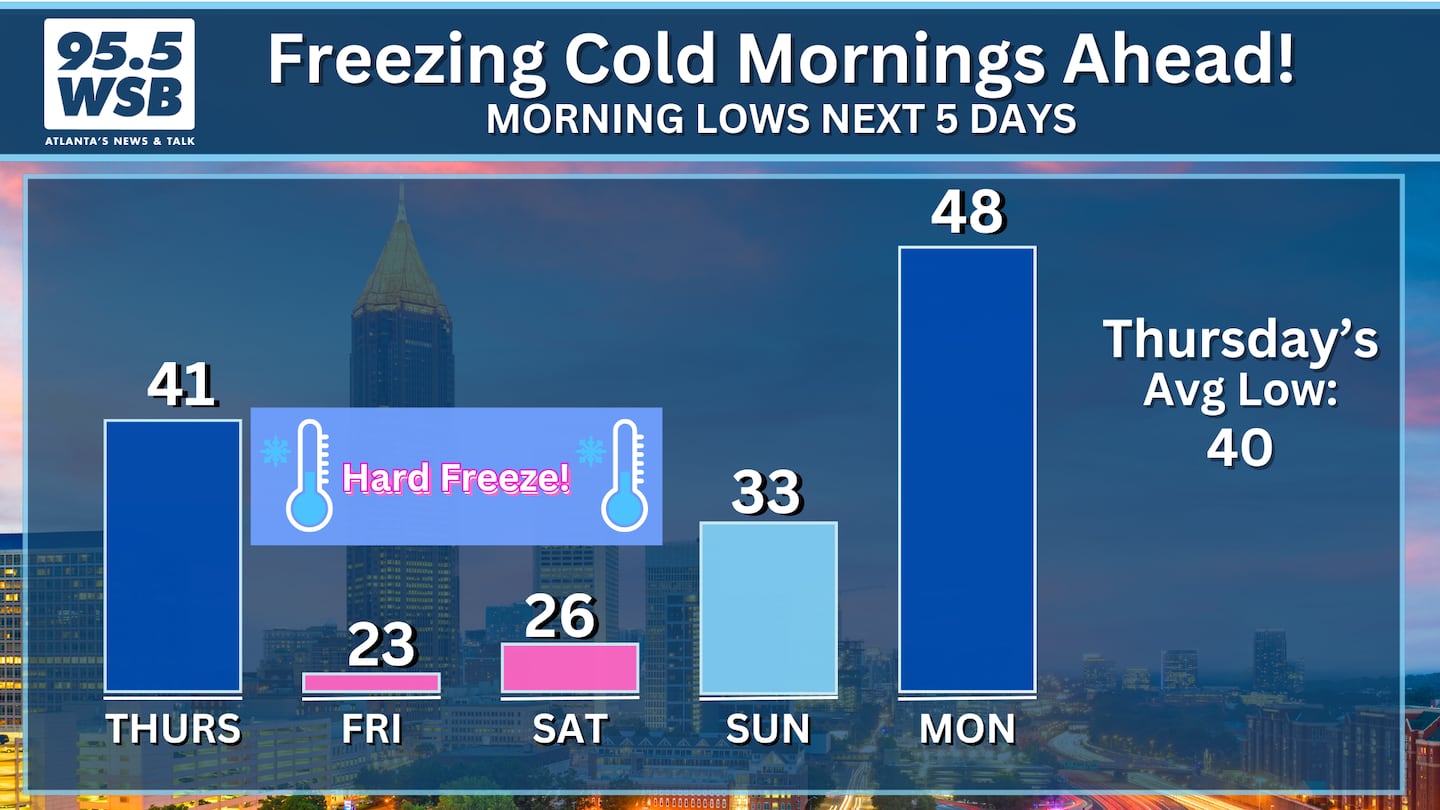Some of the coldest temperatures of the year have settled into Metro Atlanta, and morning lows dipped into the low 20s on Wednesday morning!
Good (frozen 🥶) Morning, and Happy Wednesday! This is considered "hard freeze" territory, when temperatures are at or below 28 hours for more than an hour. How is your home faring in all of this? Any frozen/burst pipes to report? #ATLwx #GAwx #Atlanta pic.twitter.com/f6ir69agf2
— Christina Edwards (@ChristinaWSBwx) December 4, 2024
Another blast of arctic air will arrive Thursday afternoon, so anticipate another frigid start on Friday and Saturday mornings.
A hard freeze is defined as temperatures at or below 28 degrees for an hour or more. Hard freeze conditions can damage crops, landscaping, and outdoor plants, but these frigid temperatures can also produce possible damage to your home.
You may often see or hear the advice of dripping your faucets when temperatures dip below freezing this time of year.
I talked with 95.5 WSB Radio Home-Fix-It Show host Dave Baker to find out how a small stream of water may save you thousands of dollars in damage.
“We drip our faucets for a couple of reasons: Running water freezes more slowly than still water. The water that is just sitting in your pipe is going to freeze much faster than if you have a flow.”
“Another reason is because -- as water freezes, it expands. With your water dripping, that means the faucet is open. If the water freezes in your pipe and it starts expanding, and your faucet’s open, it’s got a place to shove all of that water that is still in the pipe outwards.”
“If your faucet is closed and the water freezes, it starts expanding. Now it’s got nowhere to go -- it’s blocked on this side, it’s blocked on that side -- which means your pipe is just going to burst, at some point.”
“If your pipes are exposed to wind or are in the crawlspace, if they are on the outer part of your house, it could be exposed to a little more wind -- that will make you want to drip your faucets sooner.”
“It’s better to drip your faucets than to wake up with broken faucets. It’s a mess.”
“If you’ve ever had frozen pipes in the past, you’re susceptible to having frozen pipes again. I don’t care what you have done or how you have finished that room -- if you’ve had them once, you are likely to have them again.”
“If you wake up in the morning and you turn your water on, and nothing comes out, turn your water back off. Try and trace the pipe back as best you can. If you see it broken, if you see somewhere where it has actually burst with ice on it -- don’t do anything. Call a plumber, but don’t touch it. That ice is all that is keeping from that pipe from releasing water, you want it to stay frozen as long as you can.”
In addition to dripping the faucets, keep the cabinet doors open overnight or during the duration of the freezing temperatures.
“We’re doing this to allow the warm ambient air that is in the house in to reach all the plumbing underneath your faucet and sink, especially if your faucet and sink is on an outside wall. You want all the heat to reach that as much as possible.”
Talk Up a Storm With Me!
Facebook: Christina Edwards WSB
Instagram: ChristinaWSBwx
Twitter: @ChristinaWSBwx
TikTok: @ChristinaEdwards955WSB
©2024 Cox Media Group











